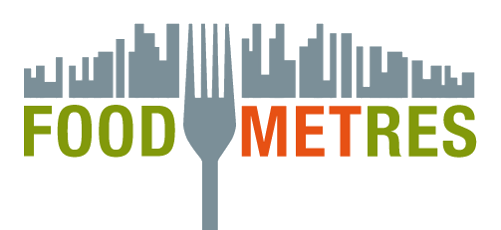Direct Marketing to consumer (off-farm)
Concept
In contrast to on-farm sales - the point of sale is the urban area which implies that the farmer or another actor in the chain has to transport the produce to the city, where the private consumers purchase their food.
Different forms of off-farm sales exist, to which correspond different modalities for logistics and movement of both actors and products. Typical examples of this form are the sale on farmers’ and weekly markets, market halls, home delivery, box schemes, online sales, or vending machines.
Farmers and weekly markets as well as market halls are oldest forms of direct marketing and popular across Europe and the world. Here the consumers and producers have to travel to a (central) marketplace (open air or indoor) and have the possibility to personal interaction with the food producer.
Within a box scheme producers supply directly consumers – or a group of them – at agreed intervals, with a box of mixed products to which the consumers have subscribed to. Typically, the consumers have the options to receive a predefined box to a fix price, to which they might add products or to select the entire content. Products come often from several farms which require a more complex logistic. A food chain actor is needed who collect, store, assembly and deliver the boxes to the consumers. The pooling and distribution of produce can be organized in a producer group or as service structure for producer etc.

A particular form of direct sale could be that of “online sale”, which stands in between on-farm and off-farm marketing. It allows the direct connection between producers and consumers, without meeting personally. From a logistical point of view, it might be the case, that the producer collects the orders of consumers and:
- Delivers the ordered products either in person or by carrier to the consumers home or
- Delivers food products ordered to a distribution site (e. g. on-farm, specialized shop in urban area), while consumers has to move to pick them up
Also vending machines (e.g. for raw milk or fruits and vegetables), can refer to both on-farm and off-farm sales. Vending machines, with particular regards to vending machines for raw milk, can be placed both on farm site and in other spots within a town or city.
Contribution to shortening food supply chains
Off-farms sales facilitate short transport distances and usually allow the direct contact between producer and consumer. For the farmer achieving higher prices for their produce is beneficial. Sometimes producers use (private) labels and logos on packaging (like bottles) and for advertising in order to inform about the origin and quality of the produce.

Committee of the Regions 2011: Opinion of the Committee of the Regions on 'Local food systems' (2011/C 104/01). Available from: http://eur-lex.europa.eu/LexUriServ/LexUriServ.do?uri=OJ:C:2011:104:0001:0006:EN:PDF
Karner, S. et al. 2010: Local food systems in Europe: Case studies from five countries and what they imply for policy and practice. IFZ Graz. Available from: http://www.faanweb.eu/sites/faanweb.eu/files/FAAN_Booklet_PRINT.pdf
Kneafsey, M. et al. 2013: Short Food Supply Chains and Local Food Systems in the EU: A State of Play of their Socio‐Economic Characteristics. Luxembourg: Publications Office of the European Union. Available from: http://ftp.jrc.es/EURdoc/JRC80420.pdf
Peters, R. et al. 2012: Local Food and Short Supply Chains. EU Rural Review No. 12. Available from: http://enrd.ec.europa.eu/enrd-static/fms/pdf/E8F24E08-0A45-F272-33FB-A6309E3AD601.pdf
Renting, H., T.K. Marsden and J. Banks 2003: Understanding alternative food networks: exploring the role of short food supply chains in rural development. In: Environment and Planning A, Vol. 35, p. 393-411.
